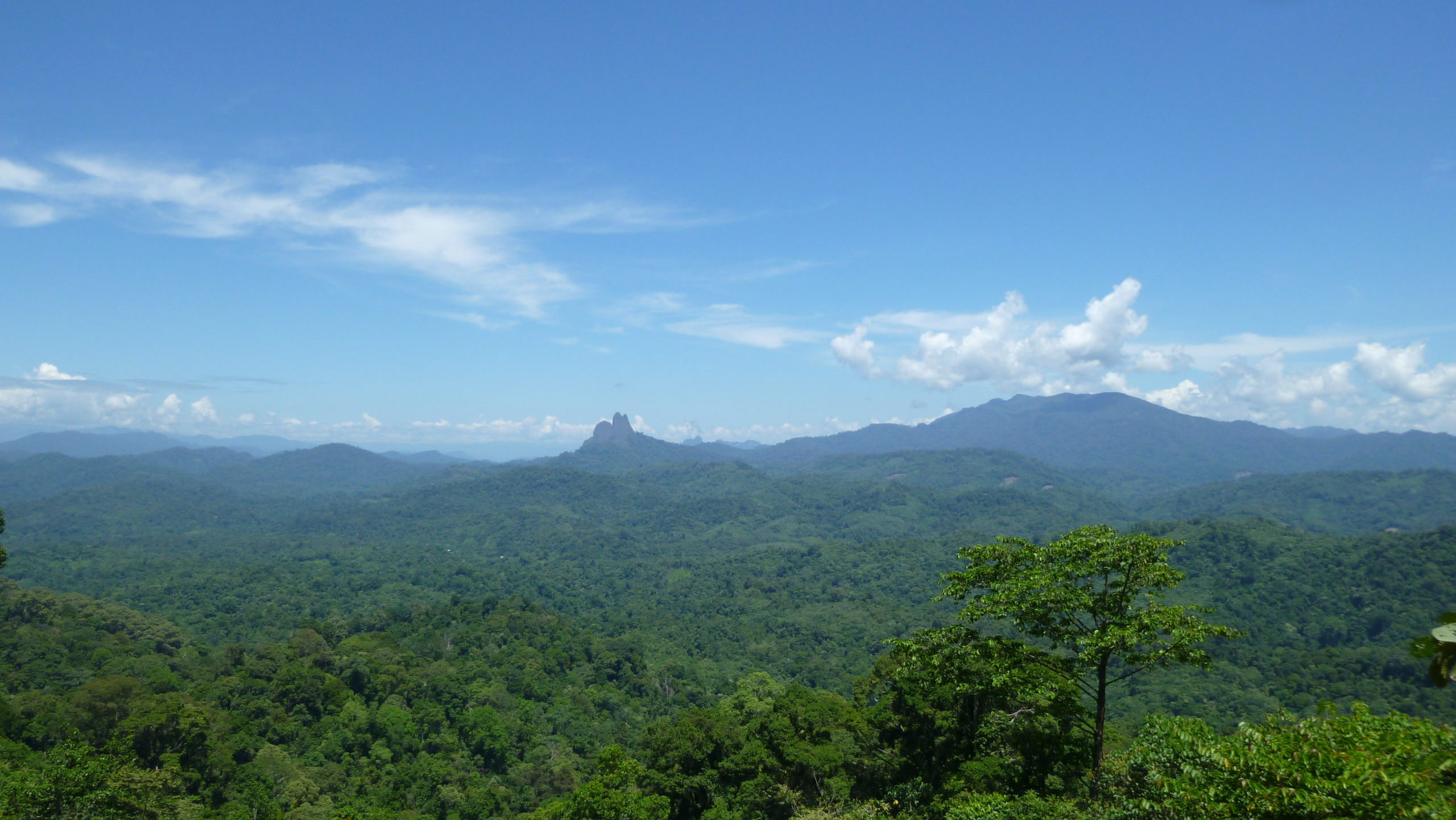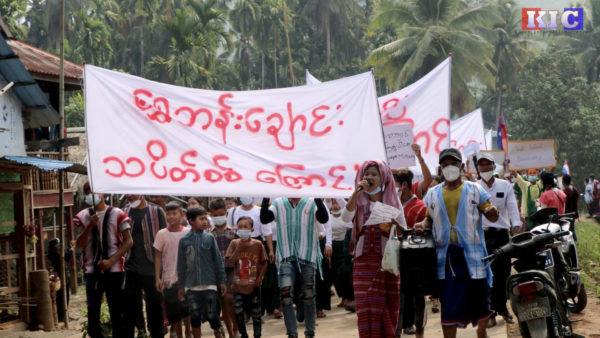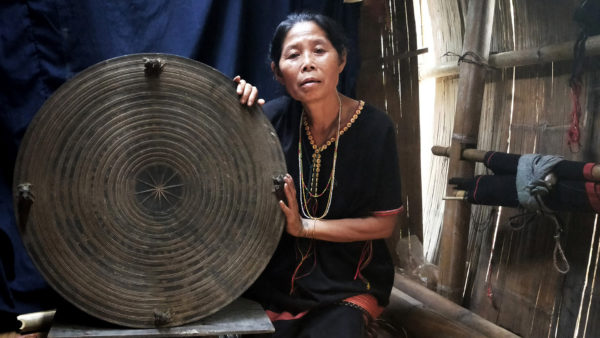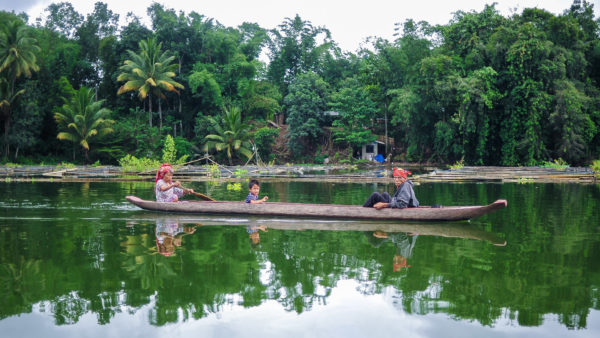The Penan and the Kenyah Indigenous Peoples in Northern Sarawak, the Malaysian state of Borneo, work together on sustaining and nurturing their territories of life
First published on 04/19/2023, and last updated on 11/09/2023
Written by Annina Aeberli
Bruno Manser Fonds and Save Rivers (ICCA Consortium Members)
Note: This article is from the recently published report “Celebrating Territories of Life in Southeast Asia.” The text has been edited for the ICCA Consortium website.
The government map shows forests, a few village names, and some agricultural fields along the Baram River and its tributary, the Selungo River. The map looks empty. Going to the ground, one would expect untouched wilderness. The map impression deceives. The area on the upper reaches of the Baram River in Northern Sarawak, the Malaysian state on Borneo, is home to the Penan Selungo and the Kenyah Jamok. For them, the landscape is entrenched with human signs and serves as their history book. Based on the communities’ mapping effort, their maps reveal fruit trees and poison trees, old campsites and farmhouses, forest gardens and sago palms, graveyards, and salt licks. Suddenly, the forest area becomes filled with human activities and history.
The denial of the presence of the Penan and the Kenyah on the map symbolizes the government’s treatment of the two Peoples. The government denies them rights to their land; they call it state land. In theory, the Sarawak Land Code guarantees the acknowledgement of Native Customary Rights (NCR) Land established before 1958, but the burden of proof lies with the Indigenous landowners. The courts work slowly, and concessions given out to companies for plantations enjoy legal precedence over NCR land.
The Penan are well known for their fierce resistance against logging. Since the 1980s, they have repeatedly set up major roadblocks to stop the logging companies from extracting timber from their forest. With their efforts, they managed to protect some of the last pieces of primary forest in Sarawak. As former nomads, they face difficulties proving their rights to their territory. For a long, they never cut any forest for agriculture, but just established temporary camps, hunted, and gathered. The starch from the sago palm serves as their staple food. Molong, their traditional practice of resource use, serves as a form of stewardship for them to look after plants like the sago palm: take, but make sure that the plant can regenerate itself.
In 2009, 18 Penan communities of the Upper Baram organized themselves under the Tana’ Pengida Pengurip Penan (Penan Peace Park), a Territory of Life. Komeok Joe, a Penan leader from Long Kerong, was amongst the initiators of the idea of the Peace Park. He said, “The Penan hope that with the Peace Park, the forest will no longer be cut down but protected and that our rights and NCR land are recognized.”
The vision of the park emerged in an attempt to create a positive vision amidst the logging activities and to strengthen their rights over the territory. They developed a vision, goals, and rules in long community meetings. Under the framework of the Peace Park, the communities have achieved many projects, such as a tree nursery, footbridges, and territory mapping. Just in 2021, they came together to block a logging road again and successfully stopped the logging company Samling from entering the territory of the Penan village of Long Ajeng.
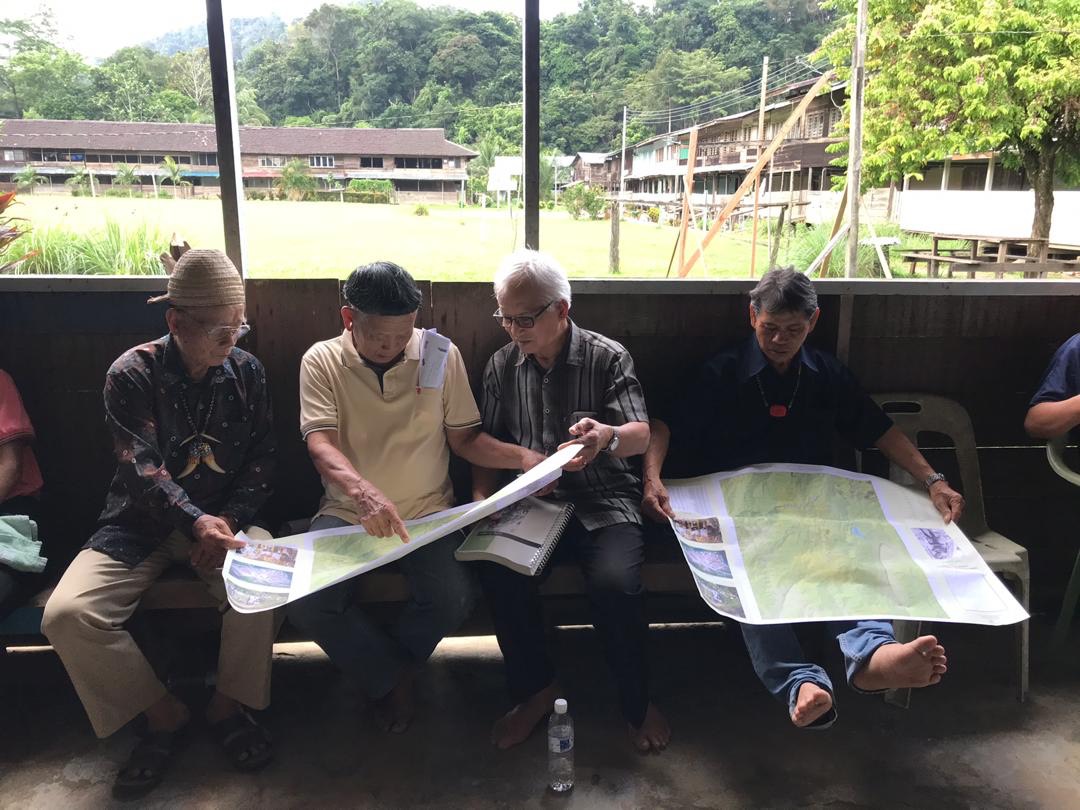
The Kenyah Jamok from Long Tungan and Long Siut are neighbors of the Penan. While the Penan live higher up in the forest, the Kenyah Jamok live along the main river of the region, the Baram River. Their experience with logging is similar. Village elder and passionate farmer John Jau explained, “Logging led to the pollution of our river and hampered our access to timber for the construction of our longhouse as everything had been cut down. The company also repeatedly broke their promise to maintain the access road to our village. We always have to beg them to repair the road.”
The Kenyah are swiddeners by tradition. They used to establish rice fields along the rivers. While their agricultural practices leave greater marks on the landscapes, they need help proving the full extent of their territory as they used to shift the rice fields and the forest grows back. They also use the surrounding forests for hunting and gathering, but communal forests are difficult to receive land titles for. The Kenyah Jamok have two communal forests. One, established long ago, is called Bai Keremun Jamok. It is protected from agricultural activities and logging and serves as the source of timber for the community to build their boats and houses. Timber extraction by the community relies on the permission of the elders.
The second communal forest was recently established after internal discussions. This communal forest is behind the longhouse, where hunting and timber cutting are not allowed, and only leisure and touristic activities are meant to occur. They submitted a proposal for the Bai Keremun Jamok to the Sarawak Forest Department but have yet to hear back from them. In 2018, the logging company Samling entered that forest without the permission and knowledge of the community. The community started complaining to the company and the Sarawak authorities and managed to stop further intrusion. With the official acknowledgment of the communal forest, the situation remains manageable. In 2020, the logging company certified the Jamok’s communal forest area for sustainable logging – without the community’s consent.
The Penan and the Kenyah have overlapping land claims in the area. This results from different land use practices: the Kenyah mainly establish individual rights over land by clearing the forest for a rice field, while the Penan establish collective rights over land through hunting and gathering in the forest. The communities want to work together and protect their land, acknowledging their different ways of using the land and their common interest in defending the area against logging. Thus the Peace Park that the Penan started became the Baram Peace Park and now includes none-Penan villages in the area, such as the Kenyah Jamok. Together with NGO support, they are currently negotiating with the Sarawak government and the International Tropical Timber Organization (ITTO) to make the Baram Peace Park happen.
Komeok Joe described the relationship between the two groups: “Our two ethnicities of the Penan and Kenyah consider ourselves brothers.” John Jau added, “We always had good relationships. I remember when I was only five years old, I was already able to follow my father fishing in the boat. I remember we met the Penan; I still know their children. They used to come and see us in the farmhouse before they settled. We want them to be close to us. We want them to share the Selungo River with us.”
The Kenyah Jamok and the Penan from the Selungo area have realized their first projects together. After mapping their areas, the Penan supported the Kenyah Jamok in completing their mapping too. Both groups now use the maps to speak out against the logging company in the area. Supported by NGOs, they have also undertaken the Baram Heritage Survey, wherein community members collected data on their forest use. John Jau shared his experience, saying, “The Baram Peace Park, the Baram Heritage Survey, and the mapping made our relationship even closer because we see that we have the same goal to preserve our land, to protect our land.”
While the Penan and the Kenyah work together to sustain and nurture their territories of life and their relationship, they always need to stay alert to defend their territories against the permanent threat of logging in the guise of sustainable forest management. Defending their forest and their land is an existential matter for them. As Komeok Joe explained, “We Indigenous Peoples are the caretaker of the land. The land is our life, the land is our culture, and the land is our identity. Every piece of land and river has our name on it. This is our home, hunting ground, our fields. They carry our memories and stories. We recall the past of our ancestors through the land. To lose our land and forest means that we lose our identity.”
